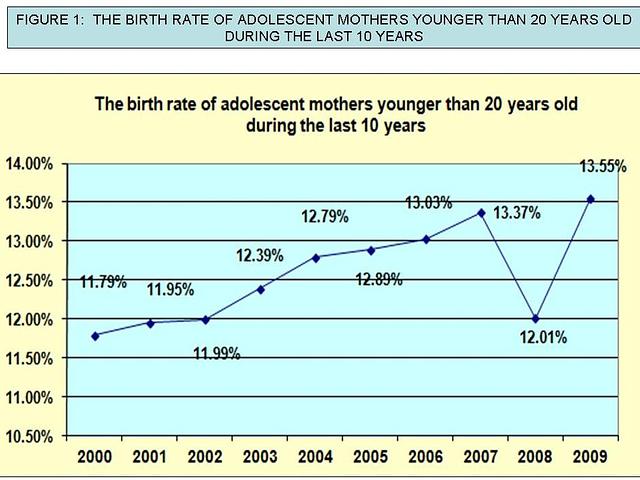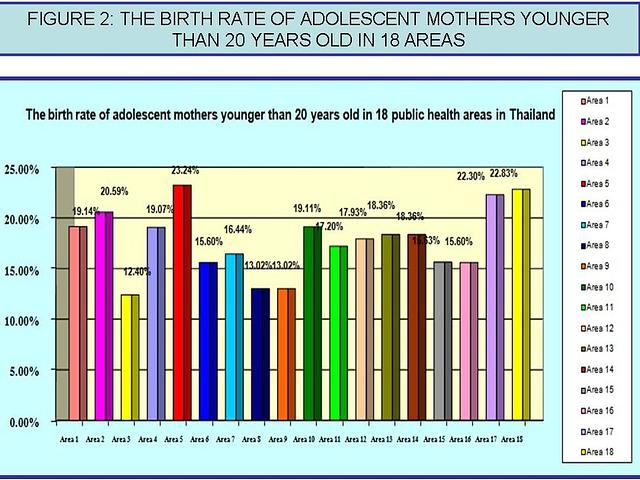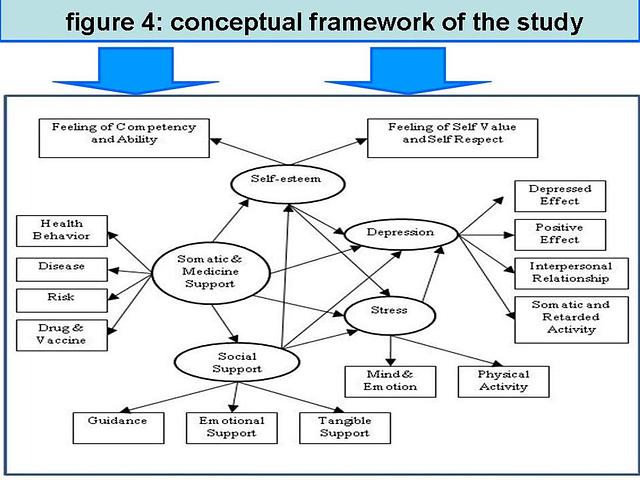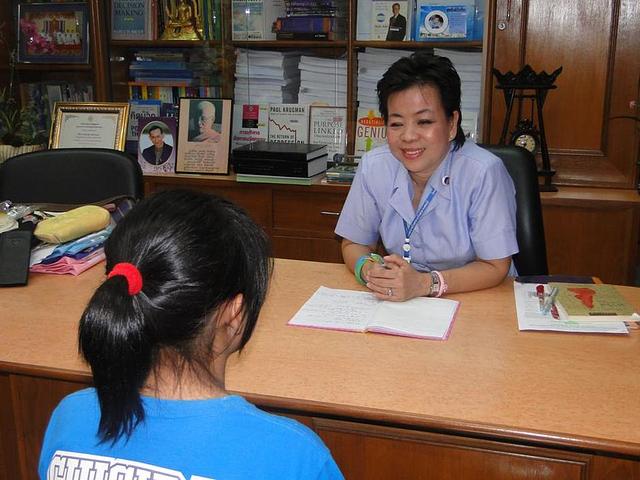Innovative..ที่ทำให้...ใจสั่นๆ..ใจไหวๆ ??
...ไม่รู้จะเป็นอย่างไรหนอ??...มีทั้ง..ดีใจ..มีทั้ง..ใจสั่นๆๆ...ใจไหวๆๆ..เครียดนิดๆๆ.. มีเกร็งๆๆ นิดหน่อยๆ ค่ะ .... นี้เป็นผลงานที่จะไปพูดที่ประชุม Internation Conference of Inclusive innovation and innovative management (ICIIIM 2012) ในวันที่14-15 ธค.2555 ...
.....ทำให้ใจของ P'Ple...สั่นๆๆ...แผ่วๆๆ ..และ...ใจหวิวๆ ค่ะ ...ไม่เป็นไรน่า ... ใจต้องสู้ ๆๆ ... ต้องสู้ๆๆนะเรา ....ทำมากับมือ...จะกลัวทำไม่นะ ... (กลัวตรงภาษา) ... ภาษาEngของเรา...ก็คงไม่ต่างกับประเทศอื่นๆๆ หรอก นะคะ เช่น Russia, Brazil, India, China, South Africa ฯลฯ..... เรื่องที่จำไปนำเสนอ คือ
"Innovative depression prevention in Thai adolescent mothers during pregnancy"
Somsri Nawarat ; Banlad Hospital; Petchaburi Province, Thailand,
Abstract — The three purposes of this study are 1) to develop the structural equation model of variables that affect depression in pregnant Thai adolescents 2) to verify how empirical data accords with the structural equation model of the variables that affect depression in pregnant Thai adolescents and 3) to study the direct, indirect, and total influences of the depression variables. This study used both quantitative and qualitative mixed methodology. The samples were 418 of pregnant Thai adolescents from eight hospitals in Phetchaburi province and twenty five of these adolescents reported significant problems. They answered questionnaires and were interviewed concerning these five variables: somatic and medical support, self-esteem, social support, stress, and depression. The data were analyzed using SPSS for Windows and the LISREL. The findings were 1) the “Teen Moms Care Model” consisted of “1D4S” (Depression, Somatic and medical support, Social support, Self-esteem, and Stress) 2) The structural equation model affecting depression during the pregnancy of the respondents corresponds with the empirical data. 3) The somatic and medical support had a positive direct effect towards depressions with the coefficient of 0.16 and a negative indirect effect of 0.14. Self-esteem had no direct effect but had an indirect and negative total effect with the coefficient of 0.31 and -0.47. Social support had no direct effect but had an indirect effect and negative total effect with the coefficient of -0.30 and -0.27 respectively. Stress had a positive direct effect and positive total effect towards depression with the coefficient of 0.84 and 0.84 at a significant level of 0.05.
Keywords — Development, Structural
Equation Model, Depression, Adolescent Pregnancy
I.Introduction
According to Thai Maternal and Child Health Network under the royal patronage of HRH Princess Srirasmi, the Princess Consort to the Crown Prince and the academic conference on “Teenage Pregnancy and Premature Birth: Challenging Problems in Thai Society” together with the adolescent pregnancy which is the main problem in Thai society, in October 2010, the Ministry of Social Development and Human Securityin cooperation with the public and private sectors prepared a drafted strategic plan to be the national agenda in order to prevent and solve the problem of child and youth pregnancy. According to the pregnancy rate criteria of the adolescent younger than 20 years old of the World Health Organization (WHO, 2004), the pregnancy rate in adolescent younger than 20 years old should be less than 10 percent when compared to the pregnancy rate of women of all ages. (WHO, 2004) The statistical records in the special reports of Saiyairak Hospital during the last 10 years stated that the birth rate of mothers younger than 20 years old has alarmingly increased. In the year 2000, there were 11.79 percent of mothers younger than 20 years old but 10 years later in 2010 it increased to 13.5 percent (Registrar Office, Department of Local Administration, 2011) (See Figure 1 and Figure 2)
FIGURE 1: THE
BIRTH RATE OF ADOLESCENT MOTHERS YOUNGER THAN 20 YEARS OLD DURING THE LAST 10
YEARS
FIGURE 2: THE
BIRTH RATE OF ADOLESCENT MOTHERS YOUNGER THAN 20 YEARS OLD IN 18 AREAS
According to 18 public health areas in Thailand, the public health area 5 has the birth rate of adolescent mothers younger than 20 years old of 28.24 percent (Special report, Saiyairak Hospital 2010). Regarding the depth analysis on the public health area 5 which consists of 4 provinces, it has been found that Phetchaburi has the most adolescent mothers younger than 20 years old, at 38.55 percent which is the highest of all provinces in the public health area 5 and also of Thailand (See Figure 3)
FIGURE 3:
THE BIRTH RATE OF ADOLESCENT MOTHERS YOUNGER THAN 20 YEARS OLD IN THE
PUBLIC HEALTH AREA 5
Because of the abundance and importance of the mentioned problems, the researcher choose Phetchaburi province to be the subject for this study. The research objectives are (1) to develop the structural equation model of variables that affect depression in pregnant Thai adolescents; (2) to verify how empirical data corresponds with the structural equation model of the variables that affect depression in pregnant Thai adolescents; and (3) to study the direct, indirect, and total influences of the depression variables.
In addition to the research objectives, the researcher develops the following research questions: (1) What are the characteristics of the variables affecting depression in Thai adolescent mothers and whether or not they correspond with the empirical data? and (2) What are the variables affecting depression in Thai adolescent mothers during their pregnancy? With regards to the research questions, the research hypotheses are thatthe variables affecting depression in pregnant Thai adolescents created by the researcher correspond with the empirical data and that the variables have direct, indirect and total effects on depression in pregnant Thai adolescents.
II. Iiterature review
Suvachai Intaraprasert and Surasak Taneepanichkul (1996) found that the adolescents during pregnancy have many problems especially mental problem due to their immaturities and sensitive emotions. Adolescent pregnancyalso strongly affects the economy and society. They are not ready to be mothers, leading to divorce. In addition, the children will be fatherless, undesired, abandoned, and ill-treated, undesired. It is possible that when they grow up, they will be aggressive, delinquent, and have problems in living with others in society. The government must spend a lot of money on medical treatment and delivery. Most of the babies delivered by adolescent mothers younger than 20 years old have the weight at birth lower than standard. They must be under the medical treatment in the hospitals for 1-3 months in average so these expenses are higher than those of the moderate pregnancy age (between 20-35 years old) which is only 5,000 baht (Abhisit Vejjajiva, 2010).
Tharathip Kolatat (2008) discusses the adolescent mothers’ expenses on newborn treatments and complications in general hospitals in Thailand are around 1,992,025,000 baht annually. If the adolescent mothers are healthy during pregnancy, these expenses will be lower and the government can save more budgets for other economic purposes.
The adolescent pregnancy is a risk to physical and mental health of both the teenagers themselves and their family members. The main problem is that the adolescent mothers are not ready for pregnancy. They cannot face the various consequent problems throughout the pregnancy period. They are frustrated, cannot accept the pregnancy, experience high stress, feel guilty, angry, and feel that they are useless, worried, and depressed. The depression affects physical, mind, emotion, society, family and national economic systems (Warren Jocelyn T.,2008). In addition to the aforementioned problems, the researcher is interested in the study on structural equation of the variables affecting depressionin Thai adolescent mothers during pregnancy. Because the Thai adolescent mothers are the country’s human resources, they should be treated with care for their good health in the future.III. research methodology
In this study, the researcher reviewed the literatures related to the 5 variables: somatic and medical support, depression,stress, self-esteem and social support as well as Pender’s Health Behavior Promotional Theory, Holistic Health Care concept, Policy on Saiyairak Hospital and maternal and child hygiene then synthesized concepts and developed the scopes of study as illustrated in Figure 4.
figure 4 : Conceptual framework of the study
Source: Adapted fromNirattharadorn (2005), Srisaeng (2003),
Boland-Prom, (2004), Dormire (1992), Spears (2007),Ruppel
(2001), Smith,(2007), Cristry ,(2011)
This study used a Mixed Method Research. The unit of analysis is pregnant Thai adolescents. The samples were chosen by probability sampling and random sampling method. The sample size is referred to Fan (2001)’s concept -- when using SEM analysis method, the appropriate sample size to be analyzed by LISREL should not less than 400 persons. There are 420 questionnaires used in this study and 418 of them were answered. The samples were chosen from 8 hospitals in Phetchaburi province during January 2011 and December 2011. 25 key informants were invited to participate in the in-depth interviews for qualitative research. The qualitative data were checked by triangulation and analyzed by interpretation. The study reported the in-depth behaviors found together with the observed behaviors of pregnant adolescents. The quantitative research tool is a questionnaire consisting of 6 parts: the first part is general information, part 2 to part 6 are rating scales. The qualitative research tool is an in-depth interview consisting of questions related to all 5 variables.
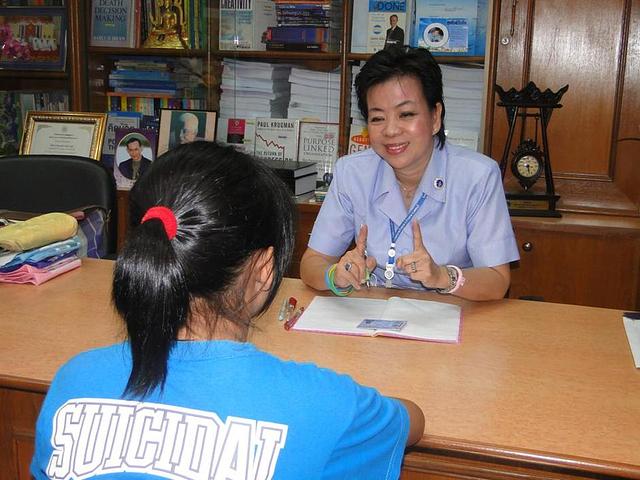
....หมอเปิ้น.... ขอจบแค่นี้ก่อน ...กำลังทำ Power Point... อยู่ค่ะ ..... จะนำเสนอ ที่ประชุมของ ICIIIM .... ในวันที่ 14-15 ธค.2555 ...แล้วจะมา เขียนต่อ นะคะ.... ตอนนี้หมอเปิ้น... ใจสั่นๆๆ ... ใจไหวๆๆ .... อยู่นะคะ ... สู้ๆๆ นะ .... หมอเปิ้น....ไม่กลัวๆๆ...สู้ๆๆ ค่ะ .... ต้องบอกตนเองเช่นนี้ค่ะ
ขอบคุณมากๆๆนะคะ

ความเห็น (25)
-
เอาใจช่วยค่ะคุณหมอ
 เปิ้ล
เปิ้ล - สู้ สู้ ค่ะ
มาให้กำลังใจ..เชื่อในฝีมือค่ะ..
แอบซุ่มดูอยู่ห่างๆค่ะ
ใจสั่นไหวเลยนะครับ
โรคนี้รุนแรง รองอธิการเพิ่งผ่าหัวใจมาครับผม
คุณหมอเปิ้ลเก่งจังค่ะ
ขอบคุณมากๆๆนะคะ พี่ๆๆ เพื่อนๆๆ น้องๆๆ ขอบคุณ ทุกๆๆ กำลังใจค่ะ ....ใจไม่ค่อยสั่นๆๆ น้อยลงแล้ว หละค่ะ
|
|
ครูทิพย์ |
|
|
พี่ใหญ่.... พี่ นงนาท สนธิสุวรรณ |
|
|
น้อง ปุญญิศา แสนบุ่งค้อ |
|
|
ท่าน kwancha |
|
|
ท่าน อจ. อ.นุ |
|
|
ท่าน ผศ. โสภณ เปียสนิท |
ข้อมูล ดีเยี่ยงนี้ จะกลัวไปใย ลุยๆๆๆๆๆๆ
เปิด Dict ไม่ทันเลยครับ 555
เข้ามาเชียร์และส่งกำลังใจให้หมอเปิ้ลนะคะ ไม่ต้องสั่นค่ะ คุณหมอเปิ้ลก็ 1 ในตองอูค่ะ สวยไว้ก่อน มั่นไว้ก่อน แม่นก็ด้วยค่ะ ไปโลดเลยค่ะ
หลานสาวสองคนน่ารักจริงๆ เลยค่ะ
Incredible stats like 30+% teen moms, in some semi-rural areas. You are right it is a cause for "ALARM".
I have sent you email on my thoughts. Please check them. I welcome your discussions.
แวะมาเยี่ยมพี่คนเก่งค่ะ
ขอเป็นกำลังใจครับ สู้ๆ
สู้ ๆ ครับ คนชื่อ somsri เก่งทุกคนครับ (รวมถึงคนที่บ้านด้วย-ชื่อเดียวกันครับ -เห็นกำลังยุ่งๆกับ HA อยู่)
May I suggest simpler captions like
FIGURE 2: BIRTH RATE BY TEEN MOMS IN 18 PUBLIC HEALTH AREAS
FIGURE 3: BIRTH RATE BY TEEN MOMS IN PUBLIC HEALTH AREA 5
?
And may I also ask you to look at my email for issues on use of this statistics?
Hi Let me make my points clearer 1) "...birth rate of adolescent mothers younger than 20 years old..." means "the rate that teen moms are born". Surely, what you mean to say is "the proportion of teenagers among women giving births" (within a certain period).
2) By naming and ranking, can't we infer from your report "the degree of under-age or teenager sexual activity in the named localities"? Your report can then be quoted as "the source of information for ranking teenagers' sexual promiscuity by area, and thus becomes another source of stress causing depression among teen moms either directly or via innuendos from other around already depressed teen moms. (Just imagine รายงานนี้บอกว่า เด็ก...ง่าย)
3) The number of teen moms and national cost incurs for teen moms is already sufficient justification for this research. There is no need to name or highlight specific areas.
I ask that you amend you report ASAP before the Internet can spread it around the world...
มาให้กำลังใจ ... นะคะ
มึนตึบเลยค่ะ ดร.เปิ้ล
ขอเป็นกำลังใจค่ะ เก่งจริง หญิงไทย ชื่นชมค่ะ
